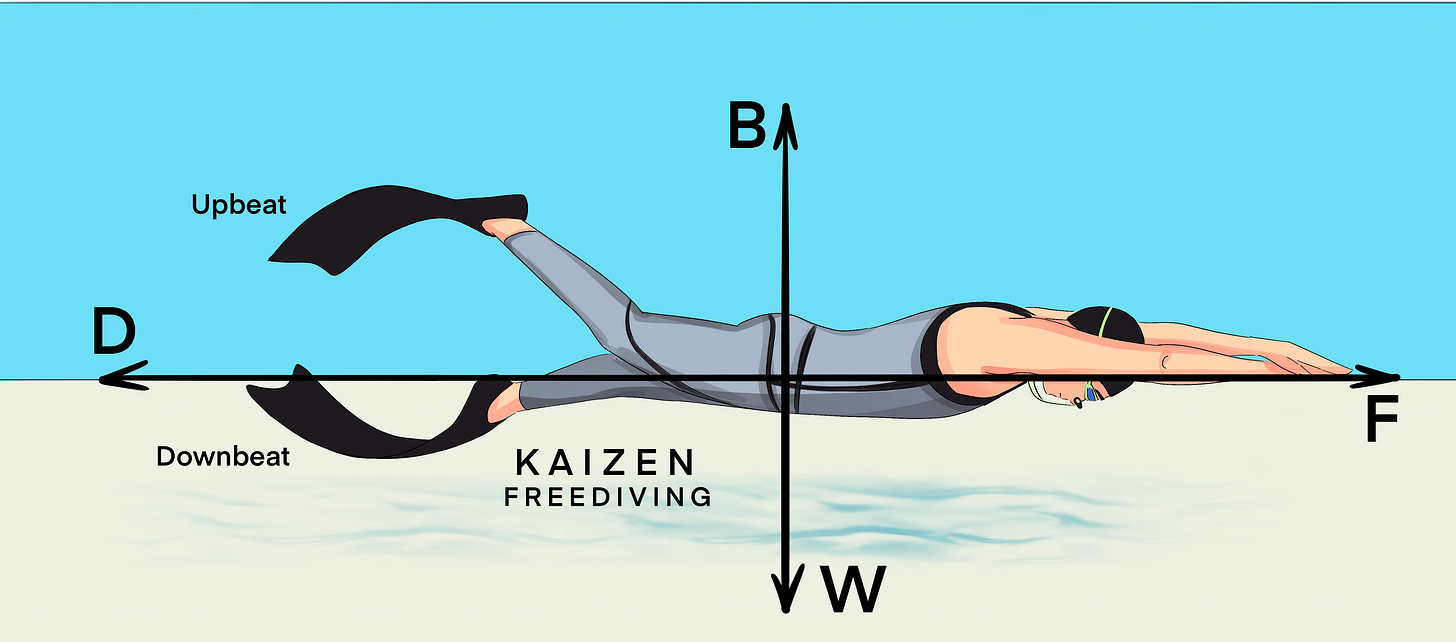In dynamic apnea disciplines, such as Dynamic with Bi-fins (DYNb), movement economy is a critical determinant of performance. This principle dictates that efficient movement minimises oxygen consumption, thereby extending the duration before the onset of hypoxia. For the freediver, optimising propulsion directly translates to increased range and depth.
Achieving this efficiency necessitates a precise understanding of the biomechanics involved in the bi-fins kick. The motion is divisible into two distinct phases:
Downbeat Phase: Initiated by the hip flexors (iliopsoas), followed by the synergistic contraction of the quadriceps. This propels the fins downward.
Upbeat Phase: Commences with the activation of the gluteal muscles, subsequently engaging the hamstrings as the fins move upward.
These muscle groups represent the prime movers responsible for effective propulsion.
Crucially, throughout the entire kicking cycle, the foot maintains a plantarflexed position to optimise energy transfer.
A comprehensive understanding and targeted conditioning of these specific muscle groups are foundational to enhancing a freediver's overall efficiency and extending underwater time.
If you want to improve your Bi-Fins kicking technique, check out this video about dry routine for Dynamic Apnea Bi-Fins.
And if you want to build a solid foundation, check out Master Freediver program at Kaizen Freediving (Koh Tao, Thailand).


